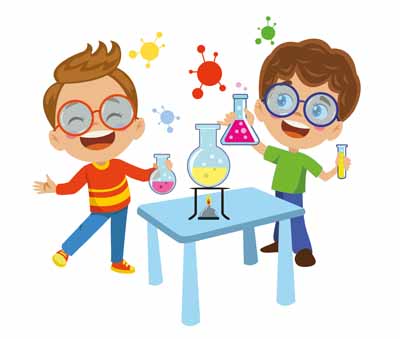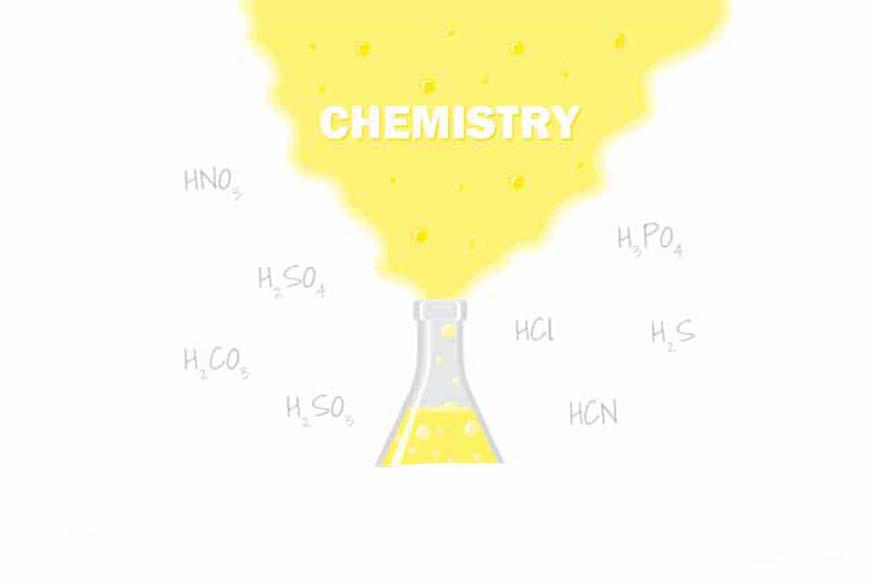Understanding what a chemical reaction is
A chemical reaction is a process where one or more substances, known as reactants, transform into one or more new substances called products. These substances can be either chemical elements or compounds. During a chemical reaction, the atoms in the reactants are rearranged to form different substances as the final products.
Chemical reactions happen all around us, from the metabolism of food in our bodies to the production of sunlight. Before exploring chemical reactions, it is essential to understand the difference between physical and chemical changes. A great example of both types of changes is a burning candle. When you light a candle, the wax melts over time. If you put a jar over the candle, it will go out.
In this scenario, burning the candle is a chemical change, while the melting of the wax is a physical change. Physical changes involve a change in the state of the material, whereas chemical changes usually result in the formation of a new substance, often releasing or absorbing energy. Therefore, we can see that chemical changes often come with specific physical changes.
Characteristics of chemical reaction

In a chemical reaction, the change from reactants to products often comes with noticeable features. There are several important properties of chemical reactions, such as:
- Formation of a gas
- Formation of a precipitate
- Change in colour
Certain chemical reactions are marked by the release of gas. For example, when sodium sulfite reacts with dilute hydrochloric acid, sulfur dioxide gas is produced. The reaction can be represented as:
Na2SO3 + 2HCl → 2NaCl + H2O + SO2
Another example is the reaction between zinc and sulfuric acid, which results in the release of hydrogen gas. This reaction is shown as:
Zn + H2SO4 → ZnSO4 + H2
Certain chemical reactions are marked by the creation of a solid that separates from the solution, known as a precipitate. For example, when copper sulfate reacts with sodium hydroxide, a blue solid of copper hydroxide forms. The reaction can be represented as follows:
CuSO4 + 2NaOH ⇢ Na2SO4 + Cu(OH)2
Similarly, when silver nitrate combines with sodium chloride, a white solid of silver chloride is produced. This reaction is shown by:
AgNO3 + NaCl ⇢ NaNO3 + AgCl
Some chemical reactions can be identified by their colour changes. For instance, when citric acid reacts with potassium permanganate, the solution changes from purple to colourless. This happens because citric acid acts as a reducing agent, which oxidises the potassium permanganate. The reaction can be represented as:
3KMnO4 + C6H8O7 ⇢ 3HMnO4 + C6H5K3O7
Another example is the reaction between sulfur dioxide and acidified potassium dichromate, where the colour shifts from orange to green. The chemical equation for this reaction is:
SO2 + K2Cr2O7 + 3H2SO4 ⇢ K2SO4 + Cr2(SO4)3 + 3H2O
Types of chemical reactions
- Combustion reaction
- Decomposition reaction
- Neutralisation reaction
- Redox reaction
- Precipitation or double displacement reactions
A combustion reaction happens when a combustible substance reacts with an oxidising agent, resulting in an oxidised product. The oxidiser, usually oxygen, is essential for the fuel to burn.
2Mg + O2 ⇢ 2MgO + Heat
For instance, when magnesium metal burns, two magnesium atoms combine with one oxygen molecule to create two molecules of magnesium oxide, and this reaction also releases heat.
A decomposition reaction happens when one substance breaks apart into two or more products. This process usually requires some form of energy, like heat, light, or electricity, to break the bonds in the original compound. For instance, when calcium carbonate decomposes, it produces calcium oxide (CaO), also known as quicklime, which is an important ingredient in cement.
CaCO3(s) ⇢ CaO (s) + CO2(g)
(Heat)
Here, the compound Calcium Carbonate, when heated, breaks down into calcium oxide and carbon dioxide.
A neutralisation reaction occurs when an acid reacts with a base, resulting in the formation of salt and water. The water is created when hydroxide ions (OH–) combine with hydrogen ions (H+). When a strong acid and a strong base react in this way, the final pH of the products will be 7. For instance, when hydrochloric acid reacts with sodium hydroxide, the products are sodium chloride (which is a common salt) and water.
HCl + NaOH ⇢ NaCl + H2O
In a neutralisation reaction, an acid and a base come together to form salt and water. The water is produced from the interaction of hydroxide ions (OH–) and hydrogen ions (H+). When a strong acid meets a strong base, the resulting pH will be 7. Take the reaction between hydrochloric acid and sodium hydroxide as an example; it produces sodium chloride (commonly known as salt) and water.
A reduction-oxidation reaction, or redox reaction, involves the transfer of electrons between different chemical substances. For instance, let’s look at a redox reaction similar to what happens in an electrochemical cell, specifically between zinc and hydrogen.
Zn + 2H+ ⇢ Zn2(+) + H2
In this reaction, a zinc atom interacts with two positively charged hydrogen ions. The zinc atom donates electrons to the hydrogen ions, resulting in the formation of a stable hydrogen molecule, while the zinc turns into a zinc ion as a product.
In a double displacement reaction, two compounds interact and their positive and negative ions exchange places, resulting in the formation of two new substances. For instance, when silver nitrate reacts with sodium chloride, the outcome of this reaction will be silver chloride and sodium nitrate.
AgNO3 + NaCl ⇢ Agcl + NaNO3
In this reaction, silver nitrate and sodium chloride participate in a double displacement reaction. Silver takes the place of sodium in sodium chloride, while sodium combines with nitrate to form sodium nitrate, resulting in silver chloride as one of the products.
Chemical reactions are at the heart of countless processes that sustain life, drive industries, and shape our world. By understanding the characteristics of chemical reactions, recognising different types of chemical reactions, and exploring diverse chemical reaction examples, we gain a deeper appreciation for the dynamic nature of chemistry.

At Center Point School, we believe in nurturing young minds to explore the wonders of science through hands-on activities and engaging lessons. Introducing students to the fascinating world of chemical reactions helps them understand the transformative power of science and inspires them to pursue a lifelong passion for learning.





